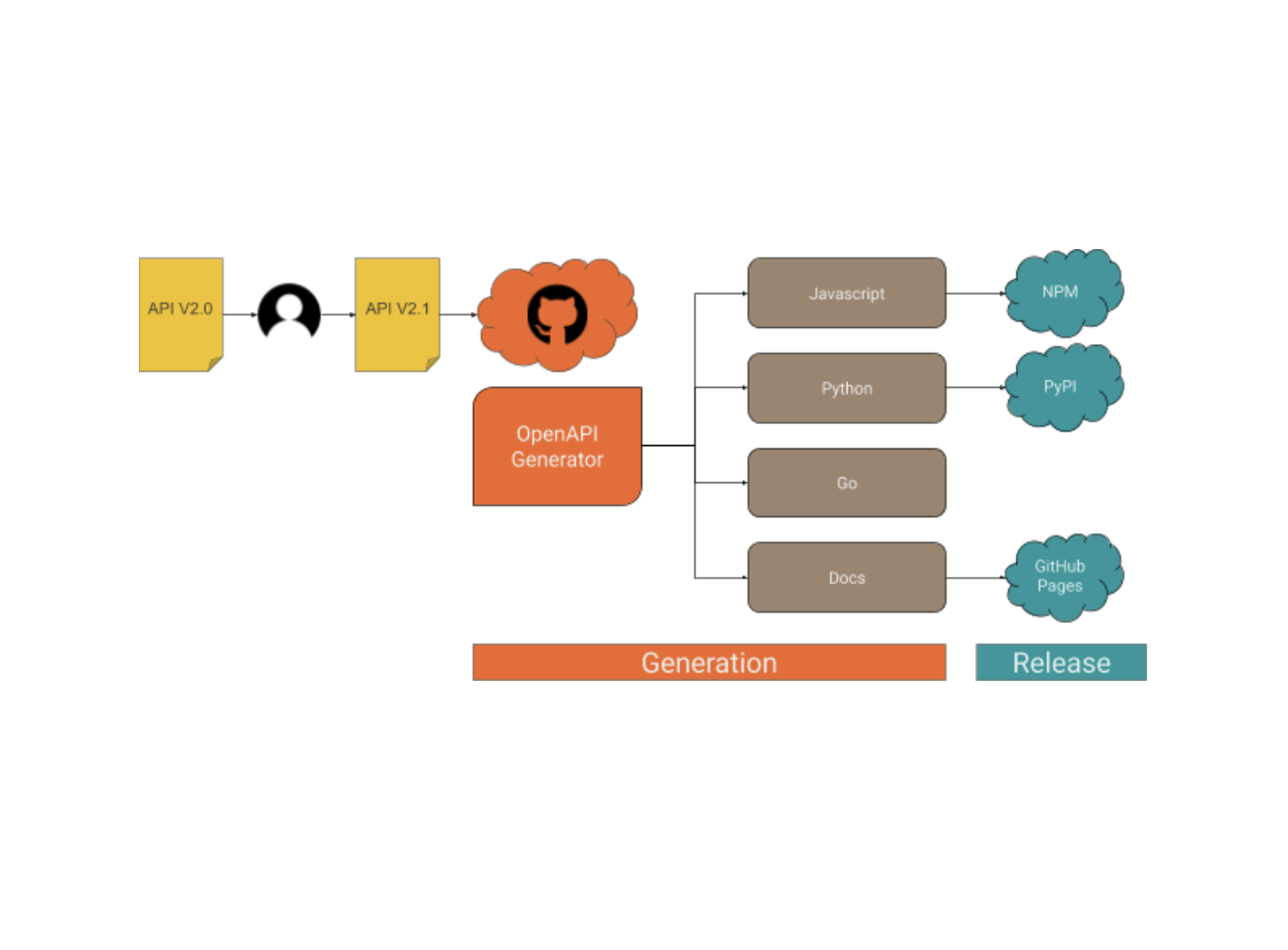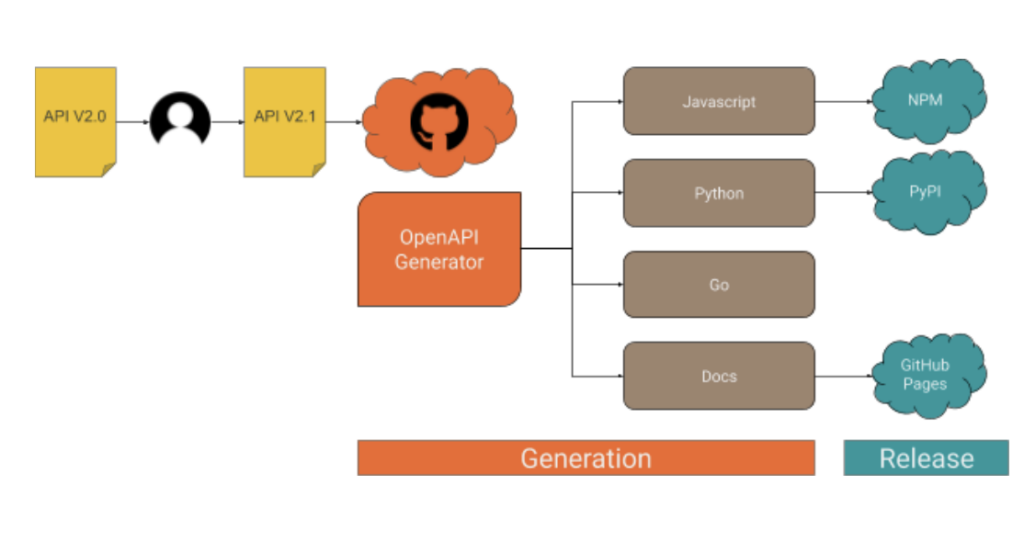
How to deal with API clients, the lazy way — from code generation to release management
This post is from Massimiliano Pippi, Senior Software Engineer at Arduino.
The Arduino IoT Cloud platform intends to make it extremely easy for anybody to handle and establish IoT applications and its REST API plays an essential function in this look for simpleness. The IoT Cloud API at its core includes a set of endpoints exposed by a backend service, however this alone is inadequate to offer a full-fledge item to your users. What you require on top of your API service are:
.Great documents discussing how to utilize the service.A variety of plug-and-play API customers that can be utilized to abstract the API from various programs languages.
Both those functions are challenging to preserve since they get out-of-date quite quickly as your API progresses however customers are especially difficult: they’’ re composed in various programs languages and for each of those you ought to supply idiomatic code that is and works dispersed according to finest practices specified by each language’’ s environment.
Depending on the number of languages you wish to support, your engineering group may not have actually the resources required to cover them all, and loaning engineers from other groups simply to launch a particular customer doesn’’ t scale much.
.
Being in this precise circumstance, the IoT Cloud group at Arduino had no other option than improving the whole procedure and automate as much as we could. This short article explains how we offer documents and customers for the IoT Cloud API.
.Customers generation workflow.
When the API modifications, a variety of actions should be taken in order to deliver an upgraded variation of the customers, as it’’ s summed up in the following illustration.

As you can see, what takes place after an engineer launches an upgraded variation of the API basically comes down to the following macro actions:
1. Fresh code is produced for each supported customer.2. A brand-new variation of the customer is launched to the general public.
.The generation procedure Part 1: API meaning.
Every endpoint supplied by the IoT Cloud API is noted within a Yaml file in OpenAPI v3 format, something like this (the complete API specification is here ):
/ v2/things/ id/ sketch: erase: operationId: things_v2 #deleteSketch specifications: – description: The id of the important things in: course name: id needed: real schema: type: string reactions: ” 200″: material: application/json: schema: $ ref: ‘#/ components/schemas/ArduinoThing’ description: OK ” 401″: description: Unauthorized ” 404″: description: Not Found.
The format is created to be human-readable, which is excellent due to the fact that we begin with a variation instantly produced by our backend software application that we by hand tweak to improve arise from the generation procedure. At this phase, you may require some aid from the language specialists in your group in order to carry out some experimentation and figure out how great the created code is. When you’’ ve discovered a setup that works, running the generator doesn’’ t need any particular ability, the reason we had the ability to automate it.
.Part 2: Code generation.
To produce the API customers in various shows languages we support, in addition to API documents we utilize a CLI tool called openapi-generator . The generator parses the OpenAPI meaning file and produces a variety of source code modules in a folder on the filesystem of your option. If you have more than one customer to produce, you will discover soon how troublesome the procedure can get: you may require to conjure up openapi-generator several times, with various criteria, targeting various locations in the filesystem, perhaps various git repositories; when the generation action is done, you need to go through all the produced code, include it to variation control, possibly tag, push to a remote … You get the essence.
To improve the procedure explained above we utilize another CLI tool, called Apigentools , which covers the execution of openapi-generator according to a setup you can keep under variation control. As soon as Apigentools is set up, it takes absolutely no understanding of the toolchain to create the customers –– actually anyone can do it, consisting of an automatic pipeline on a CI system.
.Part 3: Automation.
Whenever the API modifications, the OpenAPI meaning file hosted in a GitHub repository is upgraded appropriately, generally by among the backend engineers of the group. A Pull Request is opened, evaluated and lastly combined on the master branch. When the group is prepared to produce a brand-new variation of the customers, we press an unique git tag in semver format and a GitHub workflow instantly begins running Apigentools, utilizing a setup kept in the very same repository . If you take a look at the primary setup file , you may discover for each language we wish to produce customers for, there’’ s a criterion called ‘ github_repo_name’’: this is a killer function of Apigentools that let us press the automation procedure beyond the initial strategy. Apigentools can output the created code to a regional git repository, including the modifications in a brand-new branch that’’ s instantly produced and pressed to a remote on GitHub.
.The release procedure.
To relieve the release procedure and to much better arrange the code, each API customer has its own repo: you’’ ll discover Python code in https://github.com/arduino/iot-client-py, Go code in https://github.com/arduino/iot-client-go and so on etc. When Apigentools completes its run, you wind up with brand-new branches including the most recent updates pressed to each one of the customers’ ’ repositories on GitHub. As the branch is pressed, another GitHub workflow begins (see the one from the Python customer as an example) and opens a Pull Request, asking to combine the modifications on the master branch. The maintainers of each customer get a Slack notice and are asked to evaluate those Pull Requests –– from now on, the procedure is primarily manual.
It doesn’’ t make much sense automate even more, primarily for 2 factors:
.Because each customer has its own release system: Python needs to be packaged in a Wheel and pressed to PyPI, Javascript needs to be pressed to NPM, for Golang a tag suffices, docs need to be made openly available. We wish to make sure a human verifies the code prior to it’’ s typically offered through a main release.
.Conclusions.
We’’ ve been producing API customers for the IoT Cloud API like this for a couple of months, carrying out numerous releases for each supported shows language and we now have a great concept of the advantages and disadvantages of this method.
On the intense side:
.The procedure is uncomplicated, simple to check out, simple to understand.The system needs extremely little understanding to be operated.The time in between a modification in the OpenAPI specification and a customer release is within minutes.We had an engineer working 2 weeks to establish the sensation and the system is that we’’ re near settling that financial investment if we didn’’ t currently.
On the not-so-bright side:
.If running the system is unimportant, debugging the pipeline if something goes awry needs a high level of ability to deep dive into the tools explained in this article.If you come across a strange bug on openapi-generator and the bug doesn’’ t get attention, contributing spots upstream may be very hard since the codebase is complex.
Overall we’’ re pleased with the outcomes and we’’ ll keep developing functions on top of the workflow explained here. A huge shoutout to the folks behind openapi-generator and Apigentools!
.
Read more: blog.arduino.cc